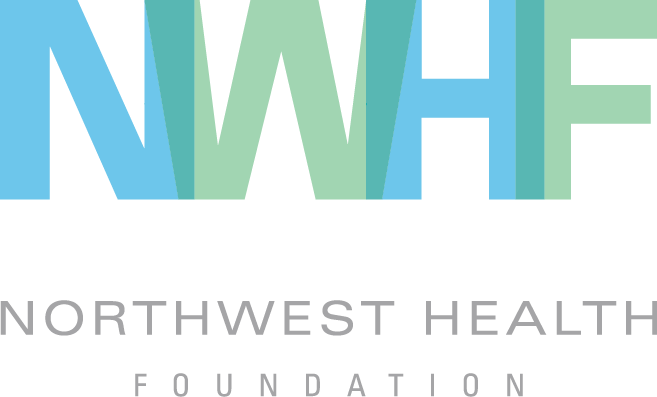The Highlands neighborhood in Longview, Washington has, for decades, gone without many of the advantages enjoyed by other communities – a strong retail district, an adequate park, thriving social service organizations, etc. It’s also one of the poorest districts in the state and has some of the highest rates of unemployment, drug use, and debilitating medical conditions such as lung cancer and diabetes to be found anywhere.
Clearly, the people who live there deserve better.
In 2006, the Longview City Council made revitalization of the Highlands a top priority, and in 2008 the City of Longview adopted the Highlands Neighborhood revitalization Plan. Soon afterward, the city and the newly formed Highlands Neighborhood Association applied for a Kaiser Permanente Community Fund (KPCF) grant to employ a community member to improve connections among the people in the Highlands.
As one City employee said in requesting the KPCF funds, “to make a difference in the Highlands, change needs to come from within the neighborhood.”
The grant request was funded, and after some searching, they finally found the right person for the job.
Meet Elizabeth Haeck, Longview’s “Community Coach.”
Most people in the Highlands already knew Liz. She volunteered everywhere from the Homeless Outreach programs to the Juvenile Detention Center, so she met a lot of the 4,900 residents who live in the neighborhood.
What she envisions, she told the Longview Daily News is a “‘front porch society,’ where neighbors know each other and help each other as needed.”
To do this, she brought people together, mostly through the newly formed Highlands Community Center.
Now the Highlands has a thriving community garden. And a new walking and biking trail is under construction.
The community center is full of programs, such as:
- Cub Scout and Boy Scout troops
- Foster family support groups
- Teen outreach programs
- Roundtable conversations about health
- Medical screenings
- A community library
- Volunteer clean-up groups
“All it took was an opportunity,” she says.
Everyone agrees that the community coach grant has been a success. Despite that, Liz works outside the coaching job to find other partners and ensure that the progress continues long into the future.
“It’s now so much more than the coach work,” she says. “The city continues to be involved, and other foundations have become interested. Parks and Rec has completed a planning process for remodeling the outdated Archie Anderson Park. There are many improvement projects that have been identified that would benefit residents of the Highlands.”
“It’s not one big thing that will make a difference.” she points out. “It’s a network of activities.”
When asked about the health impact of all this work, her response is immediate.
“Reducing isolation.”
One influence of her work is that people in the community are beginning to know and communicate with each other. “For so many people, the norm was to be afraid of your neighbors and isolate yourself,” she says. “This is terrible for health outcomes.”
“Social connections are very important but so is educating people about where to access services. When money is scarce, it’s hard to know where to begin to find the social services you’re entitled to. The community center has helped people with that.”
Now, a local family health services program comes to the community center and provides information for people, instead of waiting for people to come in on their own. “Riding a bus to these places can take half of a day, so when services come to the community center, it makes a world of difference,” she says.
This has carried through to even the police department, which has worked with the community center. As a result, she says, “people are beginning to see the police as their friend – not their enemy.”
She adds that the recent National Night Out also went a long way in helping build more social trust and community cohesion.
Despite the outstanding success that the community coach role has achieved, there’s much more work to be done. The Highlands Neighborhood Association remains critical to future success, and its sustainability will be essential to keeping the positive momentum that is currently underway.
Attendance for Neighborhood Association-sponsored programs must increase, and new funding partners will have to be added in order to ensure financial stability.
“It’s still fragile. We still haven’t built a solid foundation for the people to thrive, and that’s what we’re after,” she says, adding, “I’ve completely fallen in love with the people of the Highlands.”
“Many struggle and none of them deserve to.”
——
Thanks to photographer Hakan Axelsson for his portraits of some of the residents of the Highlands neighborhood. More photographs can be found here.
Appendix: 2010 Census Statistics for the Highlands Neighborhood of Longview, (Cowlitz County) Washington:
- Population: 4,858
- Housing Units: 1,778
- % City Population: 13%
- % Youth under age 18: 33% (City’s highest)
- % Elderly Persons: 6% (City’s lowest)
- % Latino Population: 21% (City’s highest - up from 12.7% in 2000) (City’s highest)
- % Family Households w/ children: 47% (City’s highest)
- % Single Parent Households: 24% (City’s highest)
- Poverty Rate: 44% (City’s highest)
- Median Household Income $24,000 (City’s lowest)
- % Public Assistance: 20% (City’s highest)
- Unemployment Rate: 18% (City’s highest)
- 25+ years old without h.s. diploma: 36.60% (City’s highest)
- 25+ years old with Bachelors: 3% (City’s lowest)












